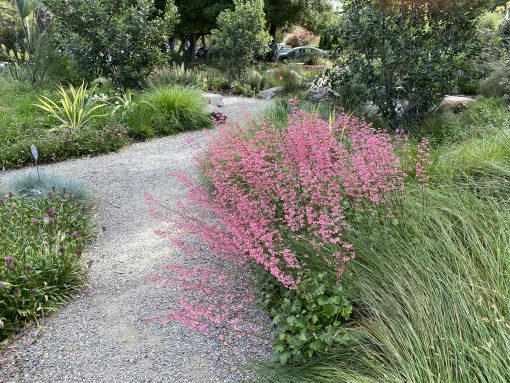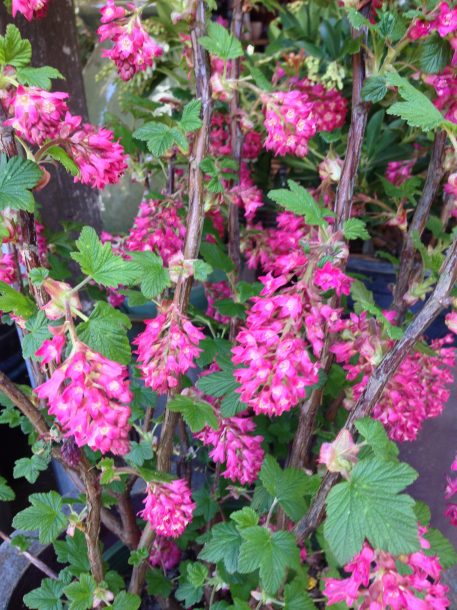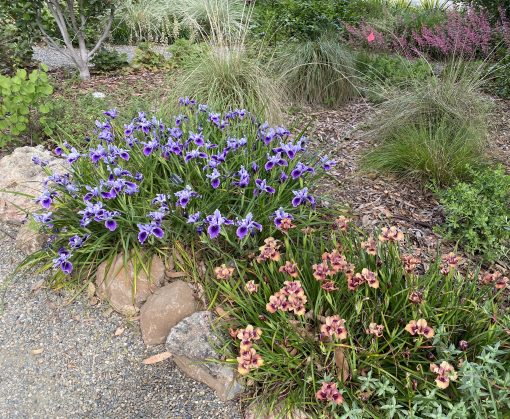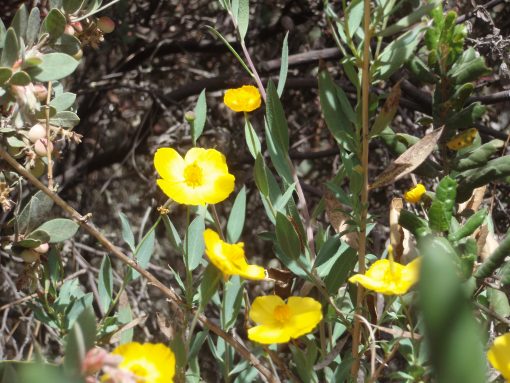
When my optometrist was in Palo Alto I used to stop by Gamble Gardens on Waverly Street to see what was in bloom. Just down from Steve Jobs house, this historic garden dating back to 1908 is aa treasure. Over 300 volunteers keep the garden looking beautiful and it’s open to the public for free every day. The California native plant garden is one of my favorite areas. Fall is the perfect time to plant in your garden. Here are some ideas.
By planting from mid-September through mid-November, roots of all plants have a chance to grow during fall and most of the winter without having to supply nourishment to the leafy portion of the plant. Roots of deciduous plants still grow even after plants drop their foliage as long as the ground temperature is above 50 degrees. Cooler day and night temperatures slowly harden off the top of the plant to prepare for the cold days of winter.
Another reason that fall is the “no-fail” planting season is because plants put in the ground in fall need less water to establish. The plants themselves use less water since photosynthesis is slowed by shorter days even if it’s occasionally warm. Evaporation rates slow down also during fall so moisture in the soil lasts longer as well. Sometimes we get lucky with fall and winter rains perfectly spaced so the ground never completely dries out. Unfortunately this winter is predicted to be another La Nina but let’s hope we get more rain than last season.
Plants that thrive in dry, shady spots benefit especially from fall planting as they need established root systems before next years dry season. Dry shade sometimes occurs in places beyond the reach of the hose but also under native oaks. To protect the health of native oaks, it’s a requirement that plants underneath thrive with little or no summer irrigation.

Plants of proven success under these conditions include native currants and gooseberry. Red flowering currant is a show stopper capable of controlling erosion. In the spring, the long, flower clusters of this deciduous shrub will dominate your garden. There are many selections to choose from so if the huge white flowers appeal to you ‘White Icicle’ will be beautiful in your landscape. ‘Barrie Coate’ and ‘King Edward VII’ have spectacular deep red flower clusters and ‘’Spring Showers’’ has 8″ long pink ones. Grow in full sun to partial shade. This California native requires little water once established and is a valuable nectar source for hummingbirds.
Some other good California native shrubs for erosion control are western redbud, mountain mahogany, western mock orange, lemonade berry, toyon, snowberry, matilija poppy and western elderberry. Rbes viburnifolium, creeping mahonia, snowberry, ceanothus maritimus and ‘Anchor Bay’s are good groundcover selections.

Smaller natives that put down deep roots are heuchera, iris dougasiana, native grasses, yarrow, coast aster, California fuchsia, wild grape, mimulus, buckwheat, wild rose, sage and salvia.

Bush poppy (dendromecon rigid) is another native found right here in our area and needs no irrigation at all once established. Beautiful bright yellow, poppy-like flowers cover the plant in spring. They can be propagated from cuttings taken in summer and are pest and disease free.
Remember when setting plants on a steep slope to arrange them in staggered rows. Make an individual terrace for each plant and create a basin or low spot behind each one (not around the stem) to catch water. Set the crowns of the plants high so they won’t become saturated and rot after watering and make sure mulch does not build up around the stem.
